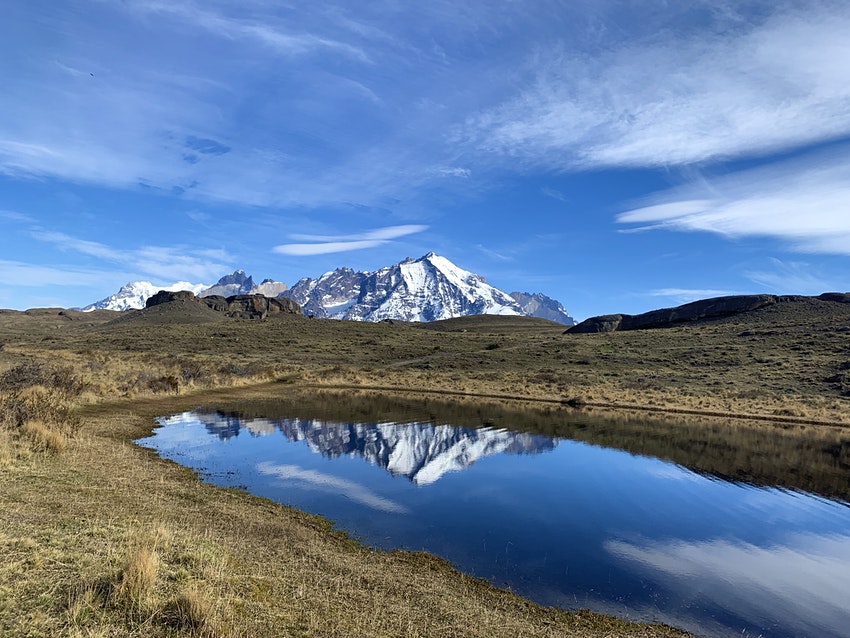True confession: I agreed to go on a week trip to Patagonia hiking tours and I didn’t even know where Patagonia was! Despite the long journey and exhaustion from a very adventurous week, it one of my most memorable trips.
Patagonia is located at the Southernmost point in South America straddling Argentina and Chile. It is one of the most popular destinations among outdoor enthusiasts. What many travelers don’t realize is that it’s also an amazing food and wine destination that also offers a touch of luxury and a laid-back lifestyle. It’s a vast region that’s perfect for a little exploration, engagement, and indulgence. From turquoise blue lakes to towering granite cliffs to glaciers and icebergs, there’s so much to take in. No matter how you like to venture out, Patagonia has something to tickle every travel bone.
Travel To Patagonia
The easiest way to navigate the region and see everything is to start out in Puerto Natales in Chile. From there, you can make your way to Torres del Paine National Park. Most travelers fly into Punta Arenas and make the 3-hour drive to Puerto Natales. It’s a charming residential town that’s a great spot to unwind after a few days in Patagonia. From here, it’s another 90-minute drive to the park. There are a few hotels and campsites in and near the park that range from rustic to refined. You’ll most definitely want to have your accommodations and dining plans mapped out well in advance.
Keep in mind that the weather in this region can be quite volatile so pack for all four seasons. You may get wild temperature swings between morning and night so be sure you’re prepared especially if you’re planning Patagonia hiking tours. And remember that the seasons are the opposite of the northern hemisphere with summer spanning December through February and winter months being June until September.
Whether you’re looking to break a sweat and add some miles to those hiking boots or just to experience the beauty of the region at your own pace, here are the best ways to see Patagonia.
What To Do In Patagonia
Patagonia for the adventurer
This region is a hiking mecca with everything from rigorous overnight treks to short immersive strolls. The 600,000-acre Torres del Paine National Park is for those looking for outdoor adventures between tranquil to the treacherous. The park’s three towering peaks are the main attraction with the tallest summit, Cerro Paine Grande, at 9,500 feet. This peak attracts technical climbers for its challenging ascent with the pinnacle being its photo-worthy spot at the top.
Patagonia hike enthusiasts will know the W trail, a 50-mile, 5-day trek that lets adventurers experience all the park has to offer from expansive views to local wildlife to feats of nature. The full hike is of moderate difficulty but many sections are also possible to do as day hikes. Need a bit more exertion? The O Circuit is a 85-mile weeklong route that is both challenging and rewarding. There are several campsites along both routes so you’ll want to be sure to book them in advance. Some areas of the park require hikers to travel with a certified guide. It’s a great way to learn about the topography and terrain through the eyes of a local.
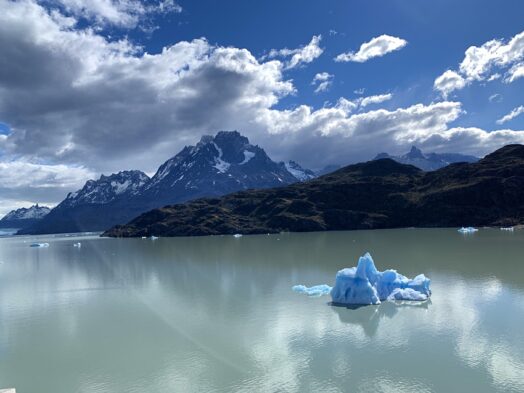
Patagonia Travel For The Nature Lover
Torres del Paine was designated a World Biosphere Reserve by UNESCO in 1978 for its unique ecological zones. These zones include the Andean Desert, Magellanic subpolar forest, Pre-Andean shrubland, and Patagonian steppe. So there’s a bit of everything for nature enthusiasts and especially for conservationists. The Flora and Fauna Trail offers a glimpse of it all including guanacos (indigenous to the region and similar to a llama or alpaca) to the fast-moving hunters, pumas, to all types of flowering plants and trees that survive the harsh conditions. And having the right guide on your Patagonia hiking tours is key to learning about all of these unique ecosystems. Serious birdwatchers travel to Patagonia in hopes of spotting all 15 of the park’s different birds of prey, including the Andean condor with its massive 10-foot wingspan.
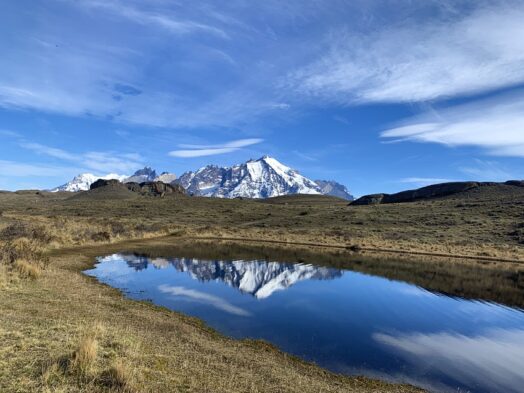
How To Enjoy Patagonia If You Love Leisure
If you want to experience Patagonia travel at your own pace, you’re in good company. Boat excursions are perfect for travelers who want to take it easy with a ride through the region’s iconic blue glaciers. Depending on the weather, the region’s lakes offer plenty of relaxing water experiences. You can paddle around a calm bay in a kayak, take a boat trips, and capture selfie moments among glaciers and icebergs. There’s also horseback riding, fishing and fly fishing, and spots to relax with a picnic and stellar views. Also, there’s a bike tour through Puerto Natales that’s a great way to breathe the fresh air when the weather is conducive.
Luxury Travel To Patagonia
If you’re hiking the park’s W, you’ll be roughing it outdoors in a tent for a few nights but there’s another camp you should consider. Patagonia Camp is the region’s only luxury yurt resort. The 20 impeccably designed yurts each include en-suite bathrooms and locally handcrafted furniture and decor. The rooms are warm and spacious with a glass ceiling perfect for late night stargazing from your bed.
Some of the suites also include hot tubs on the outdoor deck. It’s glamping at its finest with stunning views of the region’s mountains and lakes. The resort prides itself on sustainability and provides eco-friendly, biodegradable amenities so that the reclaimed water can be returned to nature (so leave your shampoo and soap at home). Patagonia Camp has its own guides and a full menu of excursions available. If you prefer to stay inside the park, Explora in Torres del Paine offers all-inclusive luxury accommodations with an indoor spa.
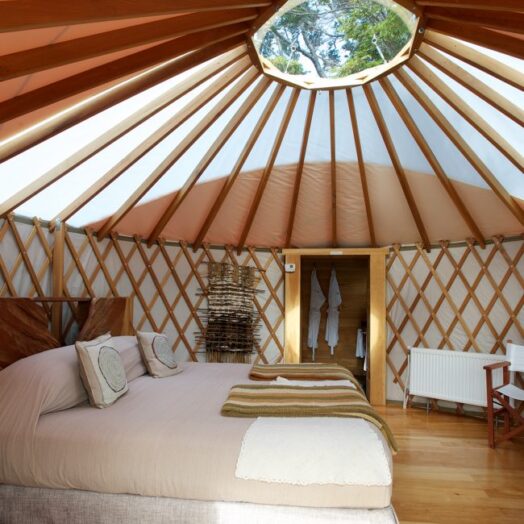
Food of Patagonia
Patagonia is known for its hearty comfort foods to provide the necessary energy for navigating the region’s rugged trails. If you enjoy seafood and meat, especially lamb, you’ll be happy with the food selections. Dining within the park is limited to a few hotels and cafeterias so you’ll want to do your research. Right outside the park, guests at Patagonia Camp enjoy a more fine dining environment with a full buffet breakfast, boxed lunches to take along on daily excursions, and a chef-inspired three-course dinner. There’s also a full bar that serves some of the region’s coveted Chilean wines. If you’re looking for a wider selection of more traditional dining options, Puerto Natales is your spot. Be sure to check out the town’s quaint coffee shops and craft breweries.
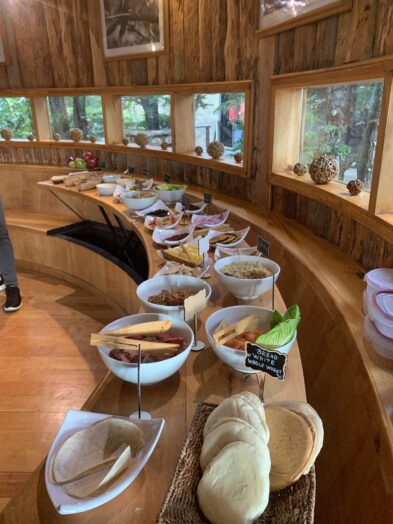
Have you experienced any of the Patagonia hiking tours or taken a Patagonia trip? I’d love to hear all about it in the comment section below.


